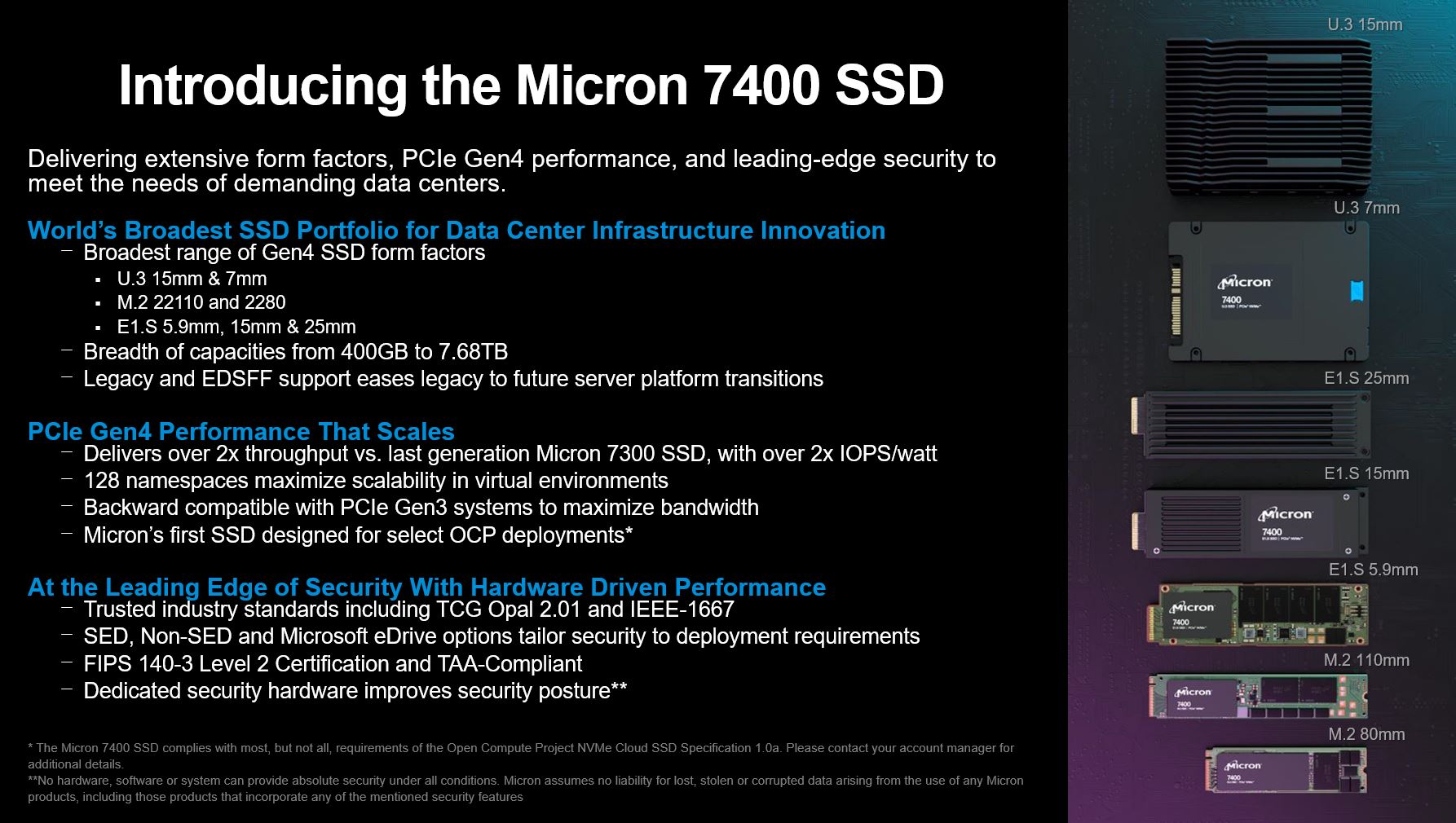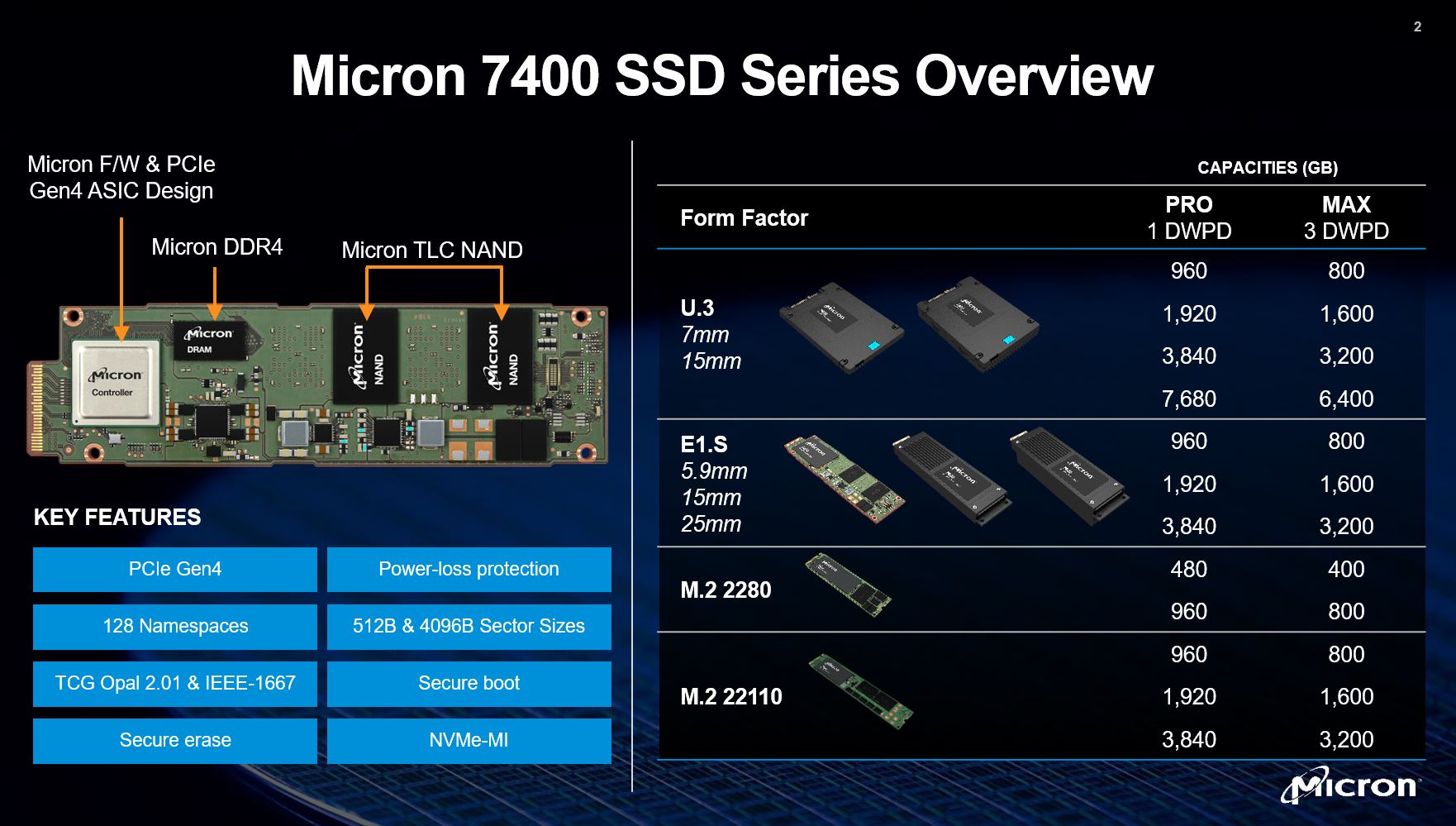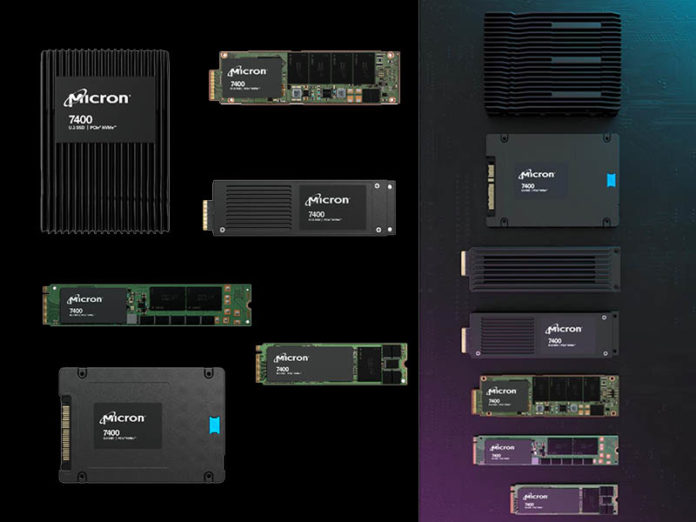To say Micron has been a bit quiet on the PCIe Gen4 NVMe SSD front, especially in the data center, is probably an understatement. With the launch of the Micron 7400 Pro series, Micron is set to change that, and in a big way. Not only does Micron have the performance one might expect from a later cycle PCIe Gen4 NVMe SSD, but it also has a breadth of form factors spanning U.3, E1.S, and M.2.
Micron 7400 Pro Overview
Performance aside, Micron has something that is absolutely unique here. The 7400 Pro series spans seven form factors. Each of these form factors is serviced by a common architecture while also adding PCIe Gen4 support for higher throughput. The common architecture across a line is a big deal since most vendors have different types of drives servicing different portions of their portfolios. Let us be clear, this is both uncommon and very interesting.
There are two variants. The 1 DPWD Micron 7400 Pro is designed for read-intensive applications. There is also a 3 DWPD Micron 7400 Max that is designed for mixed-use workloads. Capacities range from 400GB in the smallest 80mm M.2 drives to 7.68TB in the U.3 15mm form factor.

In terms of the stack, Micron has its own firmware and controller ASIC. It also is using Micron DRAM and NAND. Although the Micron DRAM/ NAND should not be a surprise, offering its own controller is certainly an important step and one we expect to see Micron continue. On the NAND side, things get interesting. Despite having the 7400 Pro as a read-intensive drive, the entire stack is still using TLC NAND. This is while many competitors have adopted QLC for higher capacity points.

On the U.3 side, Micron is focusing on the 7400 Pro. Something interesting here is that the company is offering both 7mm and 15mm drives. We have seen cases, like this Tyan server, where a chassis may not have room for 15mm drives and so 7mm can be beneficial to drive density.
On the E1.S side, the market is still less mature than the U.3/ U.2 and M.2 sides. There Micron is offering a range of options including a no-heatsink 5.9mm drive.
Micron also has a M.2 version. Here is the most interesting part: it includes a M.2 2280 (80mm) option. This also includes power loss protection. Full PLP is not a common feature on 2280 drives due to space constraints so this is actually a big deal.
Beyond the performance aspects, we see that these are also TAA compliant, have TCG Opal 2.01 encryption, SED, non-SED, and Microsoft Drive options, and are FIPS 140-3 Level 2 compliant. Micron pushed its focus on certifications with these devices as well.
Final Words
On one hand, one could say that we are fairly far into the PCIe Gen4 NVMe SSD cycle at this point. We are less than a year from PCIe Gen5 servers becoming mainstream. Micron shipping today rather than a delayed ship window certainly helps. It also has designed this to be an OCP drive so it is working with major hyperscale customers on the drive.
At the same time, Micron has taken this time to:
- Introduce an all-Micron stack
- Have a high-performing drive line
- Introduce seven different form factors
- Focus on security certifications and features
That is certainly a lot of ground to cover, and we are excited to see where Micron is going with this in the future. Expect to see reviews of these drives coming on STH when we can test them.




Why is Micron using 96 layer nand in the latest 7400 series NVMe SSD line launching in October 2021 when it already started shipping 176 layer nand in other products back in December 2020?